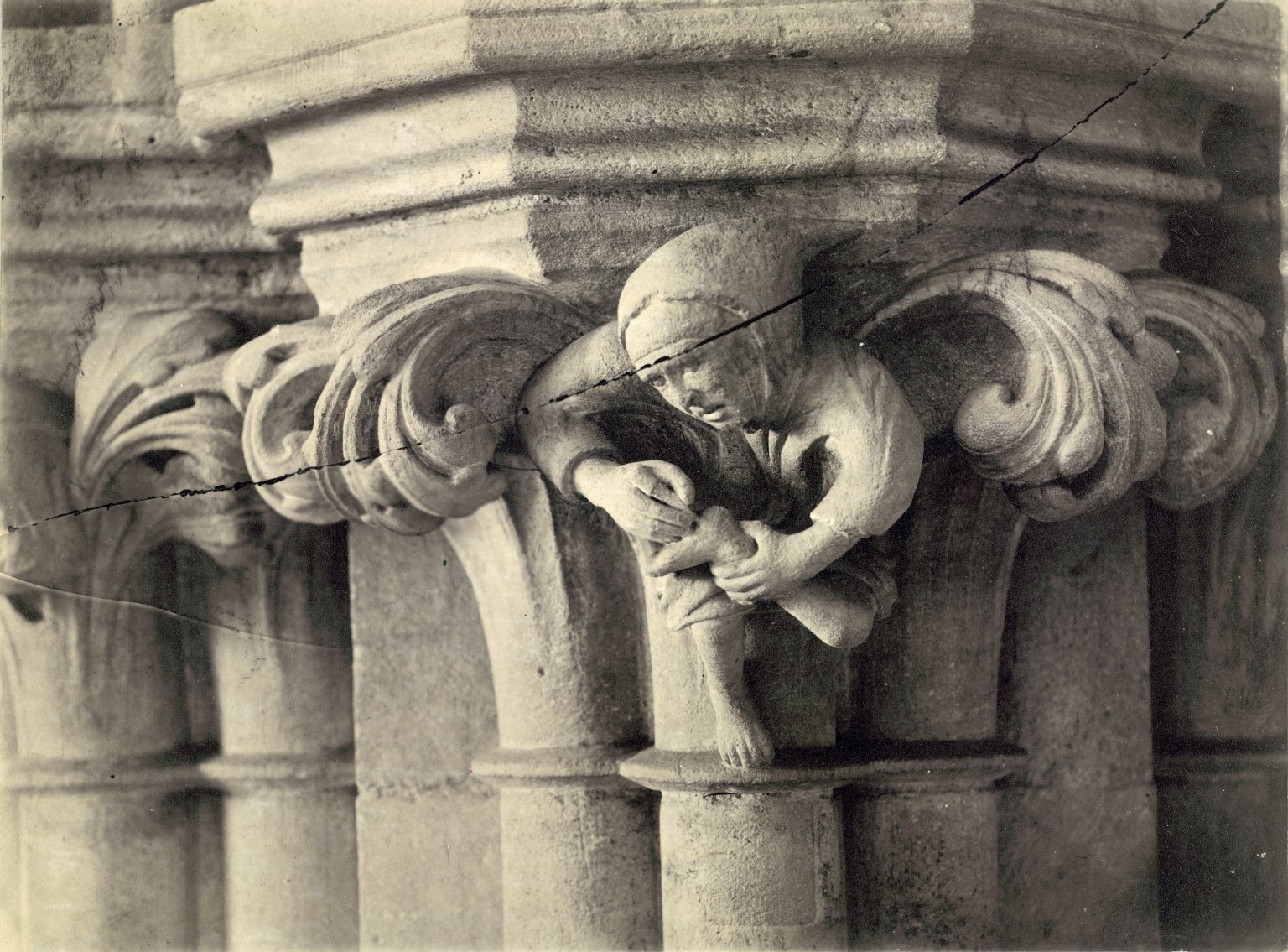
Two weeks ago, I talked about the mouth puller grotesque and how common he can be in Gothic architecture. The grotesque above belongs to a related type – the thorn puller, who struggles to pull a thorn or some other painful irritant out of his foot. The thorn puller appears in many different churches and may refer to humanity’s struggle with sin and its consequences (Benton 96-7).
Wells Cathedral is an Early English Gothic church built between 1175 & 1490. In addition to this thorn puller, Wells sports eleven different versions of the aforementioned toothache grotesque and numerous other carvings both sacred and profane (Benton 98). I wonder of all the carvers who worked on Wells Cathedral – likely many, given the centuries it took to complete – simply shared a love of body-related humor, or if this theme of aches and pains had some particular significance for this church. Wells Cathedral is dedicated to St. Andrew the Apostle, who is associated with protection against several afflictions, but foot and tooth pain are not among them.
In addition, I am really excited by the above archival image, an albumen print dated c. 1867-1895. It is owned by the Cornell University Library, which has made it available for the public. You can see cracks in the print; they don’t really disrupt the image, but they certainly show its age.
Benton, Janetta Renold. Medieval Mischief: Wit and Humour in the Art of the Middle Ages. Gloucestershire, UK: Sutton Publishing Limited, 2004.

